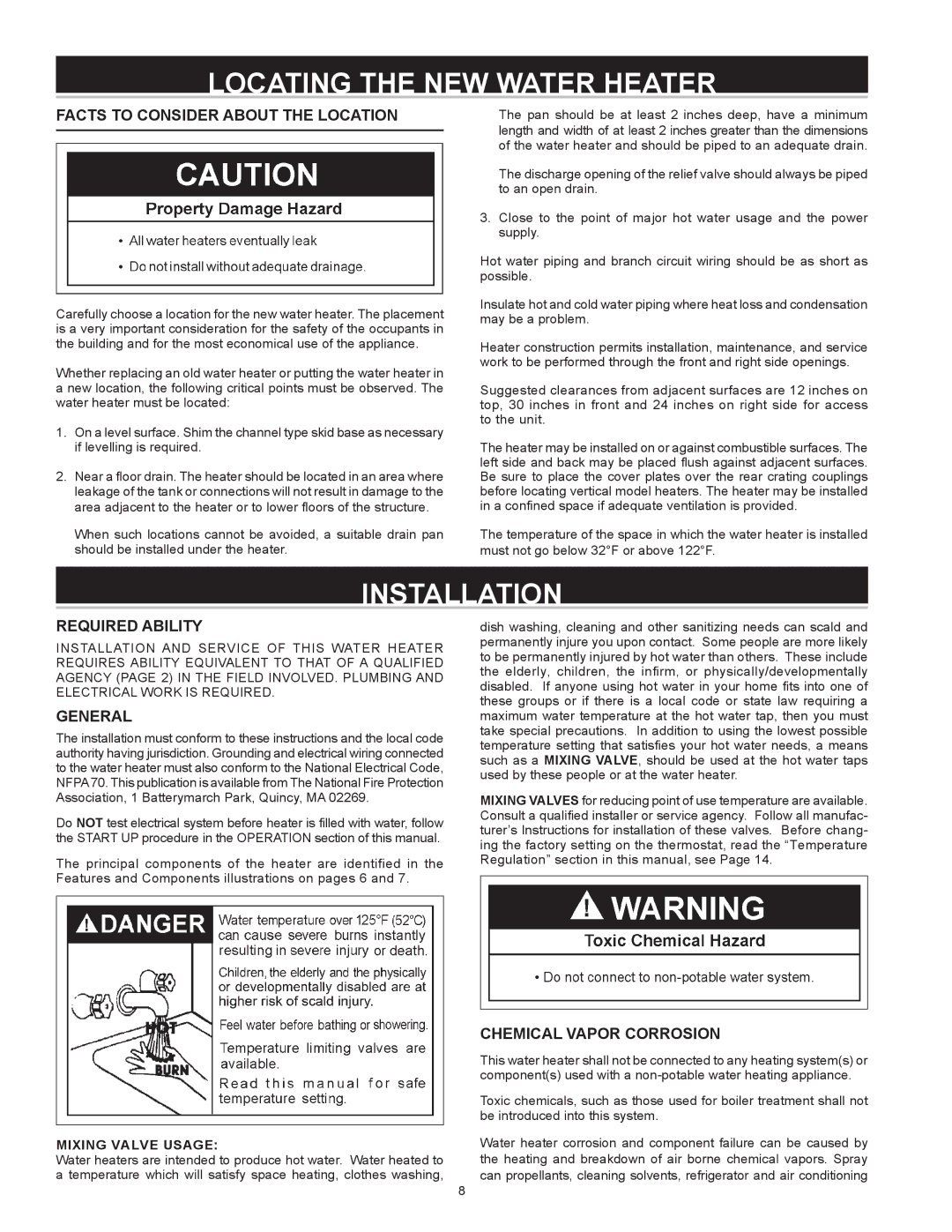DVE-150, DHE-200 specifications
A.O. Smith has established itself as a leading brand in the water heating industry, and its DVE-150 and DHE-200 models showcase the company's commitment to efficiency and innovation. Both units are designed to cater to residential and commercial water heating needs, offering a range of features that enhance performance and reliability.The DVE-150 is a high-efficiency electric water heater that boasts a 150-gallon capacity. It is ideal for larger households or small commercial applications where hot water demand is significant. One of the standout features of the DVE-150 is its advanced heating element technology. This model uses high-density insulation that reduces heat loss, ensuring more effective energy use. The unit operates at a high recovery rate, allowing it to provide consistent hot water quickly, even during peak usage times.
On the other hand, the DHE-200 is a gas water heater, equipped with a 200-gallon capacity. This model is ideal for high-demand environments where large volumes of hot water are required. The DHE-200 incorporates an innovative direct vent system that enhances efficiency and safety by removing combustion gases from the living space. The modulating gas burner further ensures that the unit operates at optimal efficiency, adjusting the heat output based on the demand for hot water.
Both models feature an intuitive digital display that allows users to monitor and adjust their settings easily. Additionally, they come with advanced diagnostic tools that provide real-time feedback on the system's performance, making maintenance easier and more efficient.
Safety is a top concern for A.O. Smith, and both the DVE-150 and DHE-200 are designed with multiple safety features. These include high-temperature limit switches, pressure relief valves, and flame rollout switches, all of which work to protect the unit from potential hazards.
In terms of installation, both models offer flexible options. They are designed to fit in various spaces, accommodating different installation environments. This versatility is essential for both new constructions and retrofitting older systems.
The DVE-150 and DHE-200 are also backed by A.O. Smith's industry-leading warranty, providing customers with peace of mind regarding their investment. Overall, these models embody A.O. Smith's dedication to quality, efficiency, and safety, making them excellent choices for those in need of reliable water heating solutions.

